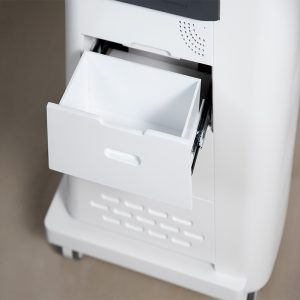Maintaining Safety and Hygiene: Anesthesia Machine Pipeline Disinfection

The very rich projects management experiences and one to one service model make the high importance of business communication and our easy understanding of your expectations for Anesthesia machine pipeline disinfection.
Introduction:
A crucial aspect of maintaining patient safety in the healthcare industry is ensuring proper hygiene and infection control protocols are followed during medical procedures. One such procedure that requires meticulous attention is anesthesia administration. Regular disinfection of anesthesia machine pipelines plays a vital role in preventing the spread of infections and ensuring the safety of patients. Let us explore the significance and best practices for anesthesia machine pipeline disinfection.
Importance of Anesthesia Machine Pipeline Disinfection:
1. Preventing Nosocomial Infections: Anesthesia machine pipelines can harbor harmful microorganisms, which can cause nosocomial infections if not properly disinfected. Regular cleaning and disinfection of these pipelines helps prevent the transmission of pathogens between patients and healthcare professionals.
2. Ensuring Patient Safety: Anesthesia involves administering medications directly into the patient's respiratory system through the anesthesia machine. Any contamination in the pipeline can put the patient at risk of developing respiratory infections or complications. Thorough disinfection of these pipelines safeguards patient safety.
Best Practices for Anesthesia Machine Pipeline Disinfection:
1. Use of Appropriate Disinfectants: Healthcare facilities should select disinfectants specifically formulated for use on anesthesia machine pipelines. These disinfectants should be able to effectively eliminate a wide range of microorganisms while being safe for use on medical equipment.
2. Follow Manufacturer's Instructions: Each anesthesia machine may have specific disinfection protocols recommended by the manufacturer. It is crucial to read and follow these instructions meticulously to ensure proper cleaning and disinfection without damaging the equipment.
3. Regular Maintenance and Inspection: Routine maintenance and inspection of anesthesia machines are essential to identify any damage or malfunction that may hinder proper disinfection. Regularly scheduled inspections help maintain the functionality of the equipment and prevent any potential contamination.
4. Training and Education: Healthcare professionals involved in the administration of anesthesia should receive proper training regarding the disinfection protocols. Continuous education on infection control practices helps ensure that healthcare providers adhere to standard procedures, reducing the risk of cross-contamination.
We will supply best quality, the most market competitive price, for every new and old customers with the most perfect green services.
Conclusion:
Anesthesia machine pipeline disinfection is a critical component of infection control and patient safety. It prevents the transmission of harmful microorganisms between patients, reducing the risk of nosocomial infections. By using appropriate disinfectants, adhering to manufacturer's instructions, conducting regular maintenance, and providing proper training, healthcare facilities can maintain the highest standards of hygiene and ensure the well-being of their patients. Remember, a clean anesthesia machine pipeline is a step towards a safer and healthier healthcare environment.
We attained ISO9001 which provides solid foundation for our further development. Persisting in "High quality, Prompt Delivery, Competitive Price", we have established long-term cooperation with clients from both overseas and domestically and get new and old clients' high comments. It is our great honor to meet your demands. We are sincerely expecting your attention.